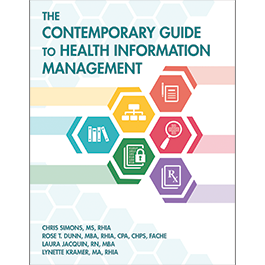Book excerpt: Establishing a denial avoidance program

Health Information Management
Denial management is traditionally focused on improving hospital revenue cycle and financial performance. Appropriate routing and handling of denials from third-party payers improves net revenue and cash flow, and reduces rework. Many healthcare organizations have a denial steering committee in place, with members from the HIM and CDI departments as a part of that team. The denial steering committee uses the expertise of its members to create and implement policies to manage denials—and to avoid them in the first place.
Implementing a denial avoidance initiative can help facilities and health systems reduce lost revenue, achieve cost savings, and improve an organization’s financial performance.
What is denial avoidance?
The fundamental objective of a denial avoidance program is ensuring that the correct processes are in place to prevent a denial from a third-party payer in the first place. These processes may span the entire revenue cycle, from obtaining proper authorizations ahead of treatment, to providing appropriate clinical reviews, or billing the claim before the payer’s timely filing deadlines.
Denial avoidance is not a replacement for denial management; an effective denial avoidance program works in tandem with a denial management program. The most significant difference between denial avoidance and denial management is that denial avoidance focuses on the prevention of receiving an initial rejection. Denial management, on the other hand, focuses on properly routing account claims for review, appeal, and feedback once a denial is received.
A key overlap exists between the two programs whereby denial management communicates feedback to denial avoidance on common denial types, trends, and issues. Then, the responsibility of denial avoidance is to understand the feedback, trends, and root causes and to implement processes that will circumvent future denials. Thus, it is imperative that a healthcare organization not only improves the way it manages and resolves existing denials, but also corrects process deficiencies to prevent new denials.
Benefits
The benefits of a robust denial avoidance program include:
- Increased net revenue
- Fewer write-offs due to denials
- Reduced rework and waste
- Greater standardization (less process variability)
- Reduced cost to collect
- Faster reimbursement/better cash flow
- Determining the root cause
Researching denials and rejections to find the root cause of the denial is an imperative step in the denial avoidance process. The root cause refers to the process breakdown responsible for causing the rejection and frequently requires research beyond the information provided by the payer.
For example, say a third-party payer denies a claim for “lack of proper authorization,” a common denial reason which may ultimately be traced to one of several causes. Perhaps patient access failed to obtain the authorization prior to service or entered the authorization in the incorrect field. Alternatively, care management may not have obtained a continued-stay authorization, or the system failed to interface the authorization number into the correct claim field.
The key takeaway is that researching denials is necessary to understand the reason a claim was rejected and where the underlying process breakdown occurred.
Editor’s note: This article originally appeared in Revenue Cycle Advisor and is an excerpt from The Contemporary Guide to Health Information Management.
